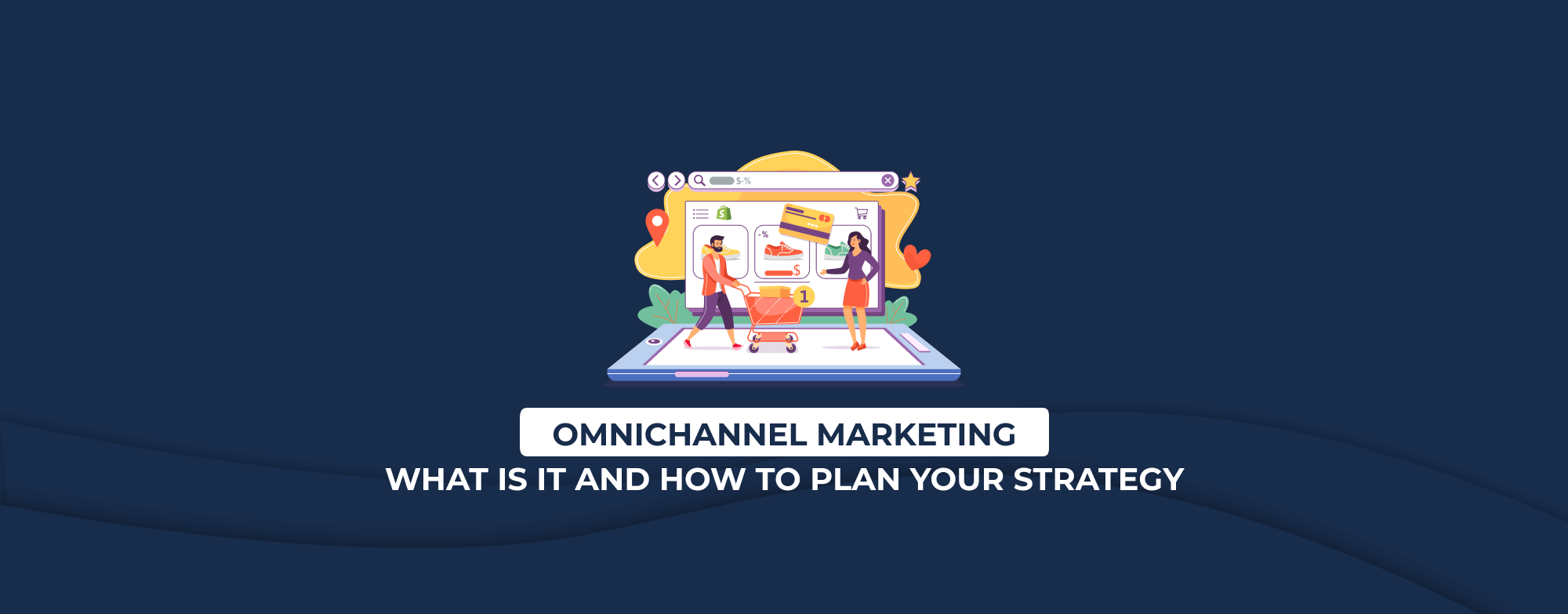
Omnichannel Marketing: What Is It And How To Plan Your Strategy
Table of Contents
Omnichannel marketing can help you boost your Shopify store sales, provide a better customer experience and improve your brand consistency. So what is it, and how can you use it?
What is Omnichannel Marketing
Omnichannel marketing is an approach to marketing across multiple channels meant to be seamlessly integrated to provide the best customer experience possible regardless of which step in the customer journey map a particular customer may find themselves.
Omnichannel Marketing vs Multichannel Marketing
The main difference between multichannel marketing and omnichannel marketing is that you use a more holistic approach in omnichannel marketing, trying to tie everything together neatly.
To do this, you use several things such as:
2.1 Integration & Collaboration
Omnichannel marketing fully integrates all the channels you're using, allowing you to share information between channels to understand your customers better and provide them with a better service and experience.
By introducing transparency and communication you allow collaboration and avoid competition.
2.2 Better Brand Consistency
An omnichannel approach to marketing will put the customer at the center and look at things from their perspective, focusing on their interactions with the brand regardless of the channel where that interaction is happening.
2.3 Personalized Messaging
Because an omnichannel marketing strategy allows you to collect and share data between channels, you can better understand at which point of the customer journey map your customer is and adjust your messaging accordingly.
2.4 Examples
Ok, so now let's try and paint a picture in your head of what omnichannel marketing looks like.
For example, imagine your favourite pizza place has an app with which you can order ahead and pay at pickup. It's using an online tool to make the customer's offline interaction with the restaurant better by reducing waiting time.
Now imagine that that same pizza place, because it has a record of all the orders you've made through the app, it knows what its customer's favourite pizza is, and can make it easier for them to order by featuring it at the top.
And that the workers at the restaurant have access to that information too, allowing them to know which is each customer's favourite pizza.
How to Plan an Omnichannel Marketing Strategy on Shopify
There's no one-size-fits-all solution. An omnichannel marketing approach requires gathering data, analyzing it, and developing a solution that fits your brand and business.
To plan your omnichannel marketing strategy, follow these 7 steps:
3.1 Collecting Data
Collecting data is an important part of omnichannel marketing because you're in the dark without data. Omnichannel marketing is all about understanding your customers better and putting them at the centre of any solution you develop. To do that, you need to collect data on their interactions with your brand.
3.2 Analyzing Data
Making sense of the data you gather is essential. You've got to figure out what your customers want, their favourite channels for interacting with your brand, and the ways in which they're interacting.
3.3 Mapping Out Customer Journey
To better understand what your customer may want or need, mapping out a customer journey can be a great tool. The process encourages you to put yourself in your customer's shoes and figure out what they might be thinking or going through when they interact with your brand.
To better understand how to chart a customer journey map, check out Hubspot's How To Create an Effective Customer Journey Map.
3.4 Identifying Opportunities
Look at your customer journey map and look at all the possible interactions. Do they suggest a missing opportunity? A moment in which a customer may want to interact with your brand but you don't currently have a channel that's conveniently reaching out to them? Or is there any interaction in which what the customer want doesn't align with what you are offering them?
What's your customer service like? A customer map is a great way of identifying ways to improve your customer service.
A big part of an omnichannel marketing strategy is making sure you have good customer service to ensure returning customers and lower your churn rate. That's the whole reason you're taking this holistic approach so do take the time to reflect on the way your brand is doing in terms of customer service.
3.5 Personalizing Messaging and Advertising
It's time to work on each and every interaction. Make them so, at any point in the customer journey, the customer's experience is always consistent regarding your brand. Make it as seamless as possible. Make it about them. Place the customer at the centre of any and every interaction they have with your business. That's what omnichannel marketing strategies are all about.
And remember, you've got data and insights to better understand what they want. Use that to personalize your messaging to better fit the moment in which you're reaching out to them or they're reaching out to you. Understand that moment and adjust your messaging accordingly.
3.6 Connecting Channels
Once you've charted out and you've visualized how all the interactions your customers can have with your brand look like it's time to make them happen. To do that you'll need to have the different channels available share data with each other, encouraging transparency and collaboration. You should let them know what you're going for and bring them on board.
It's better if you can show them your customer journey map and the possible interactions so that they better understand what you're going for and what you want from them.
Moreover, while lots of effort is made into creating different touchpoints & transferring data between them, how your customers experience each touchpoint is equally important. Therefore, it is vital to invest in a great UI/UX experience, no matter if it is improving page speed with PWA (for Magento stores) or AMP (for Shopify stores), or investing in a solid POS system.
3.7 Test and Optimize
To figure out whether something works or not, you've gotta run it. So put it in practice and gather data on how it's doing. You'll soon figure out what's working and what's not.
When something isn't working quite the way you wanted to, look at the data and try to make sense of it. Come up with a theory you can test and try it out.
And then keep doing that. The details will get smaller, which means you're getting closer. In theory, it's not a thing where you will ever arrive at something that you will stop adjusting, you'll just keep getting closer and closer every time, always making your brand and your business a little better.
How Reviews Fit Into Your Omnichannel Marketing Strategy
An omnichannel marketing strategy is all about putting the customer at the centre of things. Reviews are a way of doing just that.
Allowing your customers to tell you what they think offers quality insights that let you adjust your customer journey map to better reflect what your customers are thinking.
Having a way for customers to offer feedback lets you know when something isn't working right. You can't fix something if you don't know it is broken.
User-generated content (such as reviews) is the most effective way of convincing a potential customer that you are a good service provider or that you offer a quality product.
If you're not already using user-generated content on your Shopify store, as part of your omnichannel marketing strategy, try Opinew today.
Opinew Blog Newsletter
Join the newsletter to receive the latest updates in your inbox.






